[Part 1] Wars in AFGHANISTAN (1979-2001)
[Published originally together with Part 2 and Part 3]
What you want to understand… 🤔
- What happened during the Soviet-Afghan war (1979-1989)?
- What were the different civil wars that ensued?
- What role has Pakistan played in Afghan wars since 1979?
- Who are the mujahideen?
- Who are the Taliban?
Between 1933 and 1973, Afghanistan was a monarchy led by Mohammad Zahir Shah. It came to an end after the 1971-1972 drought that severely weakened Afghanistan’s economy and that triggered waves of disapproval towards the royal family. On July 17, 1973, the Prime Minister Mohammad Sardar Daoud Khan seized power in a coup. He turned Afghanistan into a Republic and declared himself President and Prime Minister. He started implementing economic and social reforms but with poor results. Besides, he didn’t manage to address political polarisation and instability.
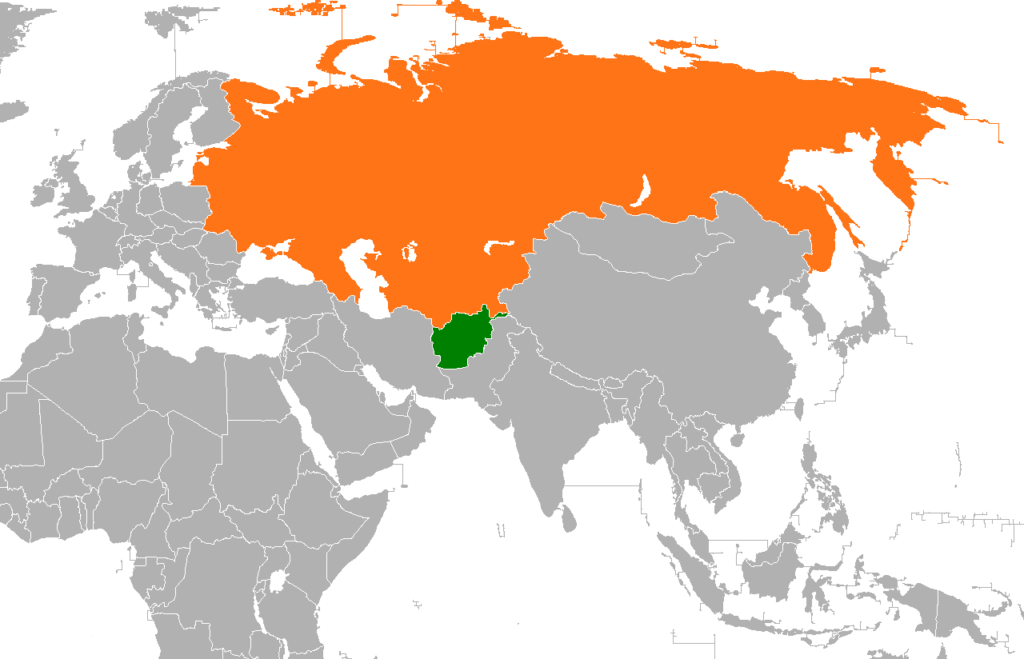
On the right, Turkmenistan, Uzbekistan, Kazakhstan, Kyrgyzstan and Tajikistan were formerly part of the USSR (orange country above).
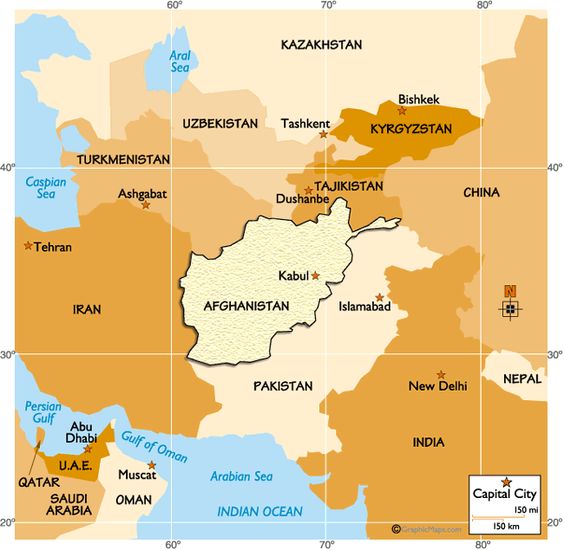
Summaries of Wars in Afghanistan between 1979-2001
A. The Soviet-Afghan War (1979-1989)
1. The Belligerents
The main belligerents were divided into 2 sides:
The USSR with
- the Democratic Republic of Afghanistan
- India: mainly a diplomatic support because the USSR guaranteed its security at the time
The Mujahideen were Sunni Islamist rebels who adopted a violent form of jihad to impose religious concepts in the political life of Afghanistan. They were anti-communist and were supported by:
- Pakistan: financial support, weapon supply and military training within its borders
- The USA: CIA operations on the ground, financial support and supplying weapons
- Saudi Arabia: financial support, weapon supply and sending fighters
- Osama Bin Laden, at the behest of his country, was in charge of organising Saudi help to the Mujahideen
- The United Kingdom: special forces operations on the ground and close logistical cooperation with the US
- China: financial support, weapon supply and military training in the Xinjiang region
- Since the late 1950s, China and the USSR had conflictual relations (take a look at my article on China and the World since 1949)
2. The Chronology
1978: the Saur Revolution
During this revolution (a.k.a. the April Coup), which was supported by the USSR, the People’s Democratic Party of Afghanistan (PDPA) overthrew Daoud Khan’s regime.
The Democratic Republic of Afghanistan (DRA) was established by the PDPA under the leadership of Nur Mohammed Taraki. He undertook several radical reforms, including socialist land reforms, to modernise the country. Besides, the PDPA organised political repression.
As a result, the establishment, religious conservative Afghans and rural communities felt threatened by these new measures. That’s why an Islamic opposition, supported by the US, organised itself. That’s how the Mujahideen emerged in Afghanistan. They came from Afghanistan of course but also from Pakistan, Iran and China (Xinjiang region).
1979: Soviet invasion of Afghanistan
Amid violent internal divisions within the PDPA, the Afghan President Nur Mohammad Taraki was assassinated. Hafizullah Amin took over in order to quickly quell the Mujahideen rebellion.
However, the relations with the Soviets worsened since Amin was seemingly negotiating with the USA.
The USSR invaded Afghanistan because it couldn’t possibly let the US get leverage there, in a context where both were fighting for global hegemony.
On December 24, 1979, the Soviets invaded Afghanistan, took control of strategic places and killed and replaced Hafizullah Amin with Babrak Karmal (Operation Storm-333). It was the beginning of the Soviet-Afghan war.
They implemented a curfew and violently repressed any form of opposition.
The communist government in Kabul endeavoured to get rid of local traditions and religious laws in order to impose a secular and Marxist model of society in Afghanistan.
1980: Intensification of fighting
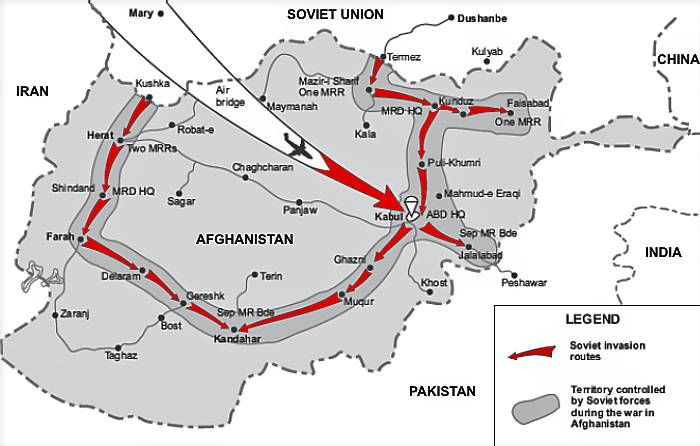
The Mujahideen waged a guerrilla war in the mountains and countryside while Soviet troops were gathered in the cities. The Soviets attempted to disrupt rebels’ logistics with air strikes and land mines without making any distinction between fighters and civilians.
However, many members of the Afghan army deserted and the Mujahideen managed to unify their ranks between the moderate and the fundamentalists.
Consequently, the Mujahideen could operate freely in roughly 80% of the Afghan territory.
Besides, the international community imposed sanctions and embargoes on the USSR and the US even boycotted the 1980 Moscow Olympic Games.
When they invaded Afghanistan in 1979, the Soviets planned to stay no more than a year. Nonetheless, with what unfolded in the first months of their campaign, they understood that overcoming the Mujahideen would take way more time…
By 1982, around 4.3 million Afghans had fled their country: 2.8 million went to Pakistan and 1.5 million to Iran.
1984-1985: The Soviets got the upper hand
Mikhail Gorbachev wanted to leave Afghanistan but without tarnishing the Red Army’s image. He wanted a clear and complete victory over the Mujahideen rebellion.
Therefore, the Soviets carried out several large-scale operations. In the meantime, they endeavoured to give more responsibilities to the Afghan army so as to prepare their withdrawal. However, Soviet victories were only punctual and not decisive: the guerrilla kept going.
1986: the Mujahideen bounced back thanks to US material support
The Islamist rebels received surface-to-air Stinger missiles from the US. They managed to shoot down hundreds of Soviet aircrafts and helicopters.

As President Karmal’s puppet regime was deemed weak and inefficient by Moscow, he was replaced by Mohammed Najibullah in May 1986. The latter was a former leader of the Afghan State Intelligence Agency (KHAD).
1987: Najibullah’s efforts to pacify and unify the Afghan society
Najibullah’s project for Afghanistan relied on a return to more conservative values. For instance, in the new constitution of November 1987, he reaffirmed Islam as the country’s official religion.
Nonetheless, it was not enough to regain popular support because the Afghan population distrusted the KHAD as well as the PDPA, the political party to which Najibullah belonged. Moreover, the population perceived the Afghan President as a mere puppet of the USSR.
Najibullah also launched a “National Reconciliation” program in order to unify his country. He entered into discussions with the different belligerents of the Soviet-Afghan war, including the Mujahideen, in order to find a solution to the crisis.
Besides, the Soviets gave up large-scale offensive and focused solely on defending strategic points and shelling enemy positions. They thus left the Afghan army, which had been modernised, in charge of tracking the Mujahideen.
1988-1989: the Mujahideen defeated the USSR in the Soviet-Afghan war
On April 14, 1988, the Geneva Peace Accord was signed between Afghanistan and Pakistan. The US and the USSR also signed it but only as guarantors.
Not only did this agreement stated the necessity for non-interference and non-intervention between Afghanistan and Pakistan, it also planned the departure of Soviet troops from Afghanistan.
Their withdrawal was complete on February 15, 1989.
Thanks to foreign support (US, Saudi Arabia, Pakistan, UK and China), the Mujahideen came out victorious of this 10-year Cold War conflict.
However, conflicts in Afghanistan were not over as the Mujahideen were still opposed to Najibullah who remained in power at the end of the war.
3. Outcome and Casualties
The reasons for the Soviet failure were numerous and stemmed from a lack of knowledge on how to carry out counterinsurgency campaigns. The Americans repeated the same mistakes a decade later. We will delve further on this point in Part 3.
The Soviet-Afghan war is sometimes referred to as the USSR’s Vietnam War. Indeed, the USSR was never in a position to deal a fatal blow to Islamist insurgents and got dragged in a conflict with no military solution.
Besides, the Soviet Union’s economy was being weakened by the arm race initiated by the US President Ronal Reagan (1980-1988). The outcome of the Soviet-Afghan war (1979-1989) only worsened the situation and symbolised the decline of the USSR that was about to get dismantled in 15 Republics in 1991.
As a result of this war, around 15,000 Soviet soldiers and around 18,000 Afghan fighters were killed. The Mujahideen suffered the loss of between 75,000 and 90,000 jihadists. As for the civilians, 5 million were displaced out of Afghanistan and between 850,000 and 1,500,000 were killed.
B. First Afghan Civil War (1989-1992)
In this first Afghan Civil War, the Democratic Republic of Afghanistan led by Najibullah was allied with the Afghan communists and still benefited from Soviet support. They were opposed to the Mujahideen still supported by Pakistan, the US, Saudi Arabia, the UK and China.
The “National Reconciliation” launched by Najibullah in 1987 failed and the Mujahideen were determined to seize power and overthrow his “puppet regime” in Kabul.
Despite a first defeat in Jalalabad in 1989, the Mujahideen managed to conquer the city of Khost in March 1991. Besides, Najibullah’s government and party (the PDPA) was plagued by internal conflicts between 2 factions: the Khalq (the People, basically working- and middle-class socialists) and the Parcham (the Flag, basically upper-class socialists). Moreover, the Afghan economy relied on Soviet help which was not sufficient and when Boris Yeltsin rose to power in July 1991, Russian help was drastically reduced.
As a result, Najibullah resigned in March 1992 and in April the Mujahideen entered Kabul.
However, there were dissensions among Mujahideen ranks, dating back to the Soviet-Afghan war. The two competing Islamist groups were the following :
- Hezb-e Islami Gulbuddin (“Islamic Party of Gulbuddin”)
- led by Gulbuddin Hekmatyar
- Islamic fundamentalism and anti-Western positions
- supported by Osama bin Laden (still at the behest of Saudi Arabia)
- Jamiat-e Islami (“Islamic Society”)
- led by Ahmad Shah Massoud
- communitarism but moderate positions overall
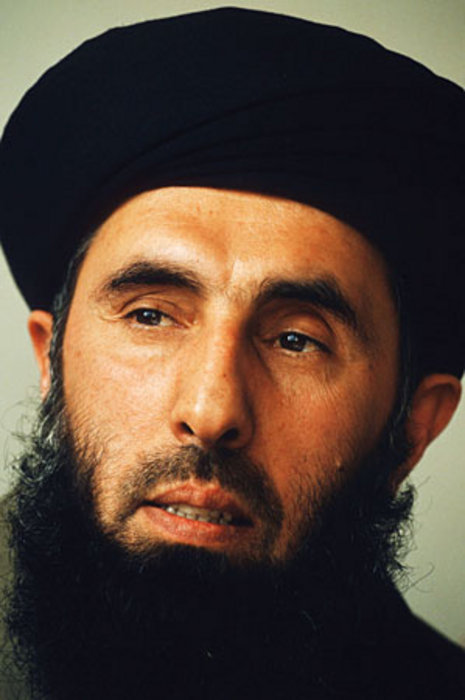
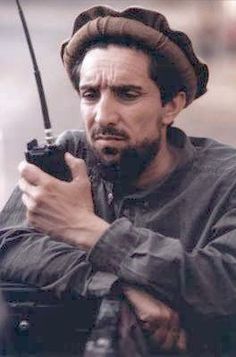
These two factions fought each other in order to take control of Kabul.
By the end of April 1992, the Democratic Republic of Afghanistan is officially dissolved and the Jamiat-e Islami led by Massoud proclaimed the establishment of the Islamic State of Afghanistan. Nonetheless, there were still regular confrontations with the Hezb-e Islami and the political situation was far from stable.
Indeed, on April 26, 1992, several Mujahideen factions signed the Peshawar Accord that put in place an interim government. However, and even though bin Laden had advised him to get involved, Hekmatyar didn’t participate since he was strongly opposed to a coalition government and wanted to rule alone.
At the end of this first Afghan Civil War, the total death toll amounted to around 50,000 casualties.
C. Second Afghan Civil War (1992-1996)
1. The rivalry between Hekmatyar and Massoud kept going
Hekmatyar’s animosity against the Islamic State of Afghanistan and the General Massoud didn’t wane after the latter’s seizure of Kabul in April 1992.
That’s why, with Pakistani support, Hekmatyar’s fighters besieged and shelled the Afghan capital in the following months.
Eventually in March 1993, through the Islamabad Accord, the Hezb-e Islami and the Islamic State of Afghanistan agreed to give the position of Prime Minister to Hekmatyar and in exchange for peace the General Massoud had to resign from his role of Defence Minister.
Nonetheless, this agreement was not respected and Hekmatyar’s bombing of Kabul resumed soon after.
However, Pakistan became unsatisfied with Hekmatyar’s results and started backing the Talibans. The Talibans emerged in Afghanistan in August 1994 with the promise to get rid of Afghan warlords and establish an authentic Islamic society.
2. Who are the Taliban?
The Taliban come from the Pashtun tribe. It is an ethnic group whose members can be found mainly in Afghanistan (15M people = 40% of the total Afghan population) and Pakistan (43M people = 20% of the total Pakistani population).
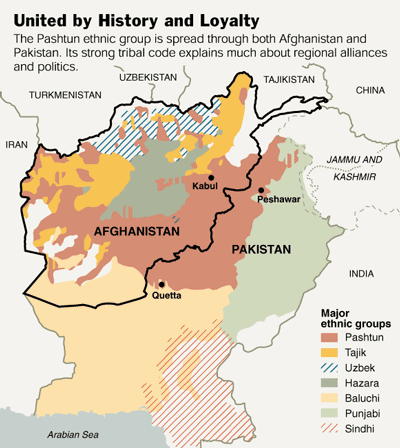
Most Taliban fighters came from refugee camps in Pakistan and several of their leaders fought during the Soviet-Afghan war in different Mujahideen factions.
Their name means “students” or “seekers” in Pashto. In fact, most of them were educated in traditional Islamic schools in Pakistan. They became part of the Deobandi movement based on a fundamentalist ideology. Indeed, the Taliban were advocates of Islamic Revivalism: they promoted a strict interpretation of Allah’s law, the Shari’ah. At first, they didn’t care about the Afghan political regime, they just wanted to “re-Islamise” the Afghan society, both in the public and the private spheres. The fact that the Taliban initially didn’t care about governance will be an issue between 1996 and 2001 and probably in the future (as of 2021)…
The Taliban were financed by Pakistani funds but they were also involved in lucrative criminal activities such as trafficking drugs like poppy crops used to produce opium.
2. The Taliban’s rise to power
Pakistan was thrilled to see the Taliban engaging in the competition for the control of Afghanistan. In fact, Pakistan thought that the Taliban would protect commercial routes, establish a favourable government and provide a solution to get rid of the nearly 2 million Afghan refugees still on its territory.
Besides, the Taliban enjoyed a wide popular support in Afghan Pashtun regions. Indeed, the entire Afghan population had had enough of the war and its countless bloodbaths. Therefore, the Taliban’s arrival was appreciated as they brought order and security. Even though their model of society entailed various moral and physical constraints, some of these constraints were actually already present in Afghanistan. For instance, women already wore the burqa and most of them didn’t work or go to school.
In the course of the years 1994 and 1995, the Taliban conquered several cities and provinces under the leadership of Mullah Muhammed Omar.

Eventually, they entered Kabul victorious on September 27, 1996. They then declared the establishment of the Islamic Emirate of Afghanistan.
The Taliban controlled the West, East and South of Afghanistan. Three regions were still in the hands of their enemies in Autumn 1996:
- Dostom’s troops. He was a former Marshal in the communist government of the Democratic Republic of Afghanistan during the Soviet-Afghan War (1979-1989).
- Massoud’s troops. He was a mujahideen and thus was opposed to Dostom during the Soviet-Afghan War (1979-1989).
- Hezb-e Wahdat was a Shia militia group opposed to Massoud. Its territory didn’t last long before falling into Taliban hands.

D. Third Afghan Civil War (1996-2001)
In 1996, Massoud and other local leaders, including Dostom who joined a bit later, gathered and formed the Northern Alliance (a.k.a. the United Islamic National Front for the Salvation of Afghanistan).
However, in 1998 the Taliban ruled over 80% of Afghanistan. In the following years they accumulated victories such that in 2001, the Northern Alliance was essentially present in the North-East of Afghanistan.
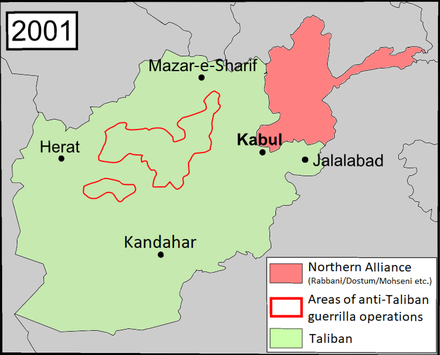
It is important to bear in mind that the Taliban hosted al-Qaeda and his leader Osama bin Laden in Afghanistan since 1996.
After the Soviet-Afghan War (1979-1989), during which bin Laden helped the Mujahideen expel the Soviets, he came back to Saudi Arabia as a hero. However, he strongly disagreed with the Saudi government over the way Saudi Arabia should organise its defence against potential Iraqi attacks (context: Iran-Iraq War in 1980-1988 and First Gulf War between Saddam Hussein’s Iraq and Kuwait in 1990-1991). Indeed, he proposed the help of his Mujahideen to the Saudi king whereas the latter preferred the US army. Osama bin Laden considered it as a grave sin as infidels (i.e. Americans) would tread the holy soil of his country. Therefore, he criticised the royal family, lost his nationality in 1994 and left Saudi Arabia for Sudan.
He then started setting up operations based on an anti-Western doctrine. In 1996, he was expelled from Sudan and found refuge at the Taliban’s side in Afghanistan.
You’ll find more information about al-Qaeda’s history and Osama bin Laden in a future article 😉
If you want to read the next parts of this article click there:
- Part 2 : The War in Afghanistan since the US intervention in 2001
- Part 3 : Why did the US fail in Afghanistan (2001-2021) ?
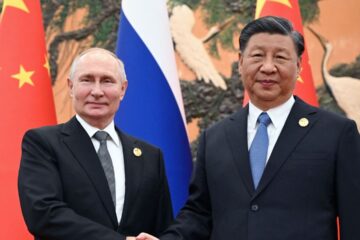


14 Comments
cpan coin · 22 March 2023 at 12:31 pm
Do you mind if I quote a couple of your articles as long asI provide credit and sources back to your website?My blog site is in the very same niche as yours and my users would certainly benefit from some of the information you present here.Please let me know if this okay with you. Thanks!
From Clinton to Biden: a look back on 30 years of US leadership – geopol-trotters · 25 September 2023 at 6:36 am
[…] on October 7, 2001, George W. Bush decided to deploy troops in Afghanistan, with the approval of the international community, as an act of legitimate defence. Within 2 […]
A Short History of Russia – geopol-trotters · 30 August 2023 at 7:07 pm
[…] 1979-1989 : war in Afghanistan […]
Al-Qaeda and Daesh in Africa - geopol-trotters · 31 December 2022 at 8:08 am
[…] Al-Qaeda has the image of a long-standing and elitist jihadist group whose claims may come across as abstract. However, it enjoys a certain legitimacy thanks to its historical role in Afghanistan. […]
Russia and the West: a New Cold War ? - geopol-trotters · 30 November 2022 at 9:23 pm
[…] that fights terrorists and supports the rebels. This situation is comparable to the one of the 1980s in Afghanistan when Soviet forces fought against the mujahedeen who were supported by the […]
Daesh’s Statehood and Caliphate - geopol-trotters · 27 November 2022 at 2:10 pm
[…] Nevertheless, the foundation of the Muslim Brotherhood in Egypt in 1928 revived the militancy for the establishment of a caliphate. It is even a major objective of the organisation Hizb ut-Tahrir (HT) that originated from a scission with the Muslim Brotherhood in 1953 18. Since then some attempted to claim the title of caliph but without explicitly mentioning it such as Mullah Muhammed Omar who led the Taliban in Afghanistan. […]
Nuclear Proliferation and World Stability - geopol-trotters · 27 October 2022 at 5:13 pm
[…] As James Dunnigan pointed out in 2003, “no one wants to use nuclear weapons because nearly every world leader recognizes the no-win aspect of a nuclear war” 2. Besides, Kenneth Waltz assumes that states are rational, self-preserving and risk averse which implies that they will not risk being totally annihilated 3. These weapons’ high destruction potential makes the intention to use them not credible. As a result, if state actors reason by backward induction they will understand that as long as they don’t use nuclear weapons themselves and don’t threaten the survival of states that own some, or that have allies that own some, then they still can start conflicts without risking sparking a global nuclear war. In fact according to the stability/instability paradox when states have nuclear weapons the probability of direct large-scale wars decreases whereas it increases for low-intensity and indirect conflicts4. That’s why during the Cold War the US and the USSR never opposed directly military and resorted to proxy wars like in Afghanistan (1979-1992). […]
The French Intervention in Mali since 2013 - geopol-trotters · 24 September 2022 at 2:39 pm
[…] France also sent troops in Mali in 2013 in order to prevent the formation of a heaven for terrorists who would later launch attacks against Europe. It didn’t want the Sahel region to become an international platform for terrorism like Afghanistan under Taliban rule between 1996 and 2001. […]
[Part 3] Why did the US fail in Afghanistan (2001-2021) - geopol-trotters · 17 May 2022 at 11:21 am
[…] originally on 18/09/2021 together with Part 1 and Part […]
[Part 2] The War in Afghanistan (2001-2021) - geopol-trotters · 17 May 2022 at 11:18 am
[…] originally on 18/09/2021 together with Part 1 and Part […]
Wars in Afghanistan since 1979 and the recent US failure [Part 3] - geopol-trotters · 16 May 2022 at 12:16 pm
[…] originally on 18/09/2021 together with Part 1 and Part […]
Wars in Afghanistan since 1979 and the recent US failure [Part 2] - geopol-trotters · 16 May 2022 at 11:31 am
[…] originally on 18/09/2021 together with Part 1 and Part […]
South-East Asia in the Middle of a Superpower Rivalry - geopol-trotters · 6 February 2022 at 7:40 pm
[…] designed the “Pivot to Asia” policy. The latter’s objective was to progressively withdraw from the Middle East and expand the US influence in the Asia-Pacific region through multilateral agreements to […]
(Overview) The USA: after Trump, a return to normal ? - geopol-trotters · 30 January 2022 at 5:48 pm
[…] US, while progressively withdrawing from the Middle East, seek to expand their influence in the Asia-Pacific region through multilateral agreements thus […]